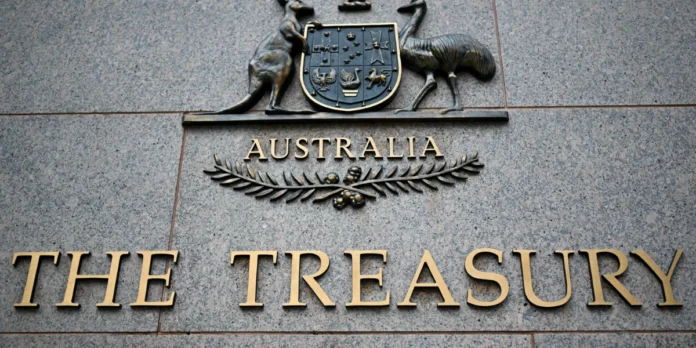The millennial generation has emerged as the clear winner in the federal budget for 2025, marking a significant shift in government spending priorities. While younger Australians celebrate tax cuts and housing support, Baby Boomers grapple with uncertainty about their retirement future.
This federal budget represents a stark departure from previous years, particularly in its approach to generational spending. Housing affordability measures, childcare subsidies, and healthcare reforms specifically target the needs of millennials at their peak earning years. However, traditional areas of boomer concern—aged care funding and retirement support—have taken a back seat.
The implications of these choices stretch far beyond immediate financial impacts. From property markets to healthcare access, the federal budget’s focus on millennial families signals a broader economic transformation that’s leaving many older Australians wondering about their place in the nation’s financial future.
Federal Budget 2025: The Millennial Financial Relief Package
The federal budget 2025 has dramatically reshaped the financial landscape for millennials, with targeted measures addressing their unique position in the economic lifecycle. Unlike previous federal budgets, this year’s fiscal package includes substantial provisions aimed at Australia’s 30-40-somethings who find themselves juggling mortgages, young families, and career advancement.
Tax cuts that benefit peak-earning millennials
The federal budget for 2025 acknowledges a growing concern among younger generations—the disproportionate tax burden they’ve shouldered in recent years. For over a decade, income tax has increasingly fallen on the shoulders of younger working Australians (Gen X, Y, and Z), creating financial pressure during their most financially demanding life stages.
The new tax structure offers notable relief to those in their peak earning years, with millennials positioned to gain significant advantages. Beyond the immediate financial benefits, these tax adjustments address a fundamental inequity that has developed in Australia’s taxation system. Many millennials finding themselves servicing substantial mortgages alongside raising young children will discover these tax cuts provide much-needed breathing room in stretched household budgets.
Furthermore, the tax relief comes at a crucial moment for this generation—many of whom have experienced stagnant wage growth during their early career years following the economic challenges of the past decade.

Housing affordability measures targeting first-time buyers
Despite widespread acknowledgement of Australia’s housing crisis, the federal budget’s approach to housing affordability remains somewhat conservative. The ban on foreign buyers purchasing existing homes, although highlighted in budget announcements, represents a continuation of existing policy rather than bold reform.
Nevertheless, millennials can find some hope in the expansion of the Help to Buy scheme, which offers a pathway to homeownership for those still struggling to enter the property market. This scheme represents one of the few concrete measures addressing the significant housing challenges facing younger Australians.
Yet many housing experts note this falls short of the ambitious policy needed to address the housing crisis truly. The absence of reforms to negative gearing and limited investment in affordable housing construction leaves millennials facing an uphill battle despite these modest improvements.
Cost of living relief tailored to young families
For millennials with young children, the federal budget delivers several targeted measures:
Healthcare support: The funding injection to bulk-billing services addresses a key concern for millennial parents, many of whom spend considerable time in “GP waiting rooms with small, snotty children.” This practical measure acknowledges the reality of family life for this generation.
Direct financial relief: A $150 electricity bill reduction provides immediate assistance, albeit modest compared to overall household expenses. Combined with tax cuts, these measures attempt to address the cost-of-living pressures facing young families.
Educational support: Funding for university study hubs, alongside a 20% reduction in HELP loan debt, offers educational relief that benefits both millennials and the upcoming Generation Z.
Additionally, the 45% increase to maximum Commonwealth rent assistance will assist the considerable portion of millennials still renting while attempting to save for a deposit.
In essence, the federal budget 2025 reflects a broader recognition that millennials—now firmly in their family formation and career development years—require targeted fiscal support to navigate the unique economic challenges they face.
Healthcare Reforms: Why They Matter More to Millennials
Unlike tax cuts that benefit various age groups, healthcare reforms in the federal budget 2025 deliver uniquely targeted advantages to the millennial generation. For this demographic—now navigating the challenges of young families and career advancement—recent healthcare policy changes address specific life-stage concerns often overlooked in previous federal budgets.
Bulk-billing expansion for families with young children
The substantial funding injection to bulk-billing services represents a significant win for millennial parents. The budget allocates more than $650 million over three years to add 50 Medicare urgent care clinics nationwide, creating practical relief for families with young children who frequently require medical attention.
This expansion directly addresses a common millennial experience—spending considerable time in GP waiting rooms with “small snotty children,” as one millennial parent described it. Consequently, the increased access to bulk-billing services means:
- Lower out-of-pocket healthcare costs for young families
- Reduced financial stress during common childhood illnesses
- Greater accessibility to medical care without appointment delays
Many millennials now find themselves in what financial experts call the “sandwich generation”—simultaneously caring for young children while beginning to support ageing parents. Accordingly, the federal budget’s healthcare provisions offer crucial support during this financially demanding life stage.
Women’s Health Funding Addressing Millennial Concerns
Women’s health initiatives in the federal budget 2025 likewise demonstrate a pronounced focus on millennial concerns. The government has allocated $240.4 million over five years to women’s health funding, with significant portions directed toward issues predominantly affecting women in their 30s and 40s.
Notably, $20.9 million will provide specialist care and support for women experiencing endometriosis and pelvic pain—conditions that affect approximately one in nine Australian women of reproductive age, primarily millennials currently in their prime reproductive years.
Moreover, increased funding for mental health services—$46 million over four years for digital mental health programmes—addresses the rising rates of anxiety and depression among millennials, balancing career advancement with family responsibilities.
The timing of these healthcare initiatives aligns perfectly with the millennial life stages. As this generation progresses through their 30s and early 40s, reproductive health concerns become increasingly relevant. In fact, many millennials face these health challenges precisely when financial pressures from mortgages, childcare, and career establishment are at their peak.
Indeed, this healthcare focus represents a marked shift from previous budgets that often prioritised age-related conditions affecting older Australians. The PBS reforms that cap prescription costs at $25 per script benefit all Australians but create particularly significant relief for millennials managing multiple prescriptions for young family members.
This generational healthcare focus creates clear winners and losers. For millennials, the budget delivers meaningful solutions to immediate health concerns. The boomers, meanwhile, find their healthcare priorities—mainly aged care and retirement planning—receiving comparatively less attention in this budget cycle.
The Boomer Budget Anxiety: Missing Priorities
While millennials celebrate their windfall, Baby Boomers face a federal budget that appears to sideline their most pressing concerns. Despite representing a significant portion of the voting population, older Australians find several critical priorities missing from the focus areas of the federal budget for 2025.
Aged care funding gaps despite population ageing
The $2.6 billion allocated for aged care nurse pay rises stands as the lone significant investment in a sector facing unprecedented demand. As the boomer generation continues ageing, this funding—though welcome—falls remarkably short of addressing fundamental structural issues in aged care.
Indeed, improved wages for aged care workers will help attract and retain quality staff. Yet, at the same time, the budget lacks comprehensive reform addressing:
- Increasing accommodation shortages for ageing Australians
- Quality standards enforcement across the sector
- Support services for in-home care preferences
- Integration of technology to improve care efficiency
Essentially, the budget offers a band-aid solution to a system requiring major surgery. The allocation appears even more insufficient given the projected growth in Australia’s elderly population over the next decade.

Retirement income concerns left unaddressed
Perhaps most concerning for many Boomers, the federal budget 2025 remains notably silent on retirement income security. Despite widespread anxiety about superannuation adequacy and retirement funding, the budget provides minimal relief for those approaching or currently in retirement.
The absence of any substantial changes to superannuation policy or pension rates leaves many older Australians questioning their financial future. Given these points, it’s unsurprising that retirement planning experts have described the federal budget as “overlooking the elephant in the room.”
Contrary to the tax cuts benefiting peak-earning millennials, no equivalent relief targets those living on fixed retirement incomes who face the same inflationary pressures. This gap appears particularly stark considering that not all Boomers enjoy property wealth or substantial savings—a reality often obscured by generational stereotypes.
Healthcare access issues beyond Medicare changes
In contrast to tailored health provisions for millennials and their families, healthcare reforms addressing age-related conditions remain largely underdeveloped. The $25 cap on Pharmaceutical Benefits Scheme prescriptions undoubtedly benefits older Australians who typically require multiple medications. Similarly, the 4.7% increase to Medicare levy low-income thresholds will assist seniors and pensioners.
These changes, primarily focused on cost relief rather than structural improvement, fail to address growing concerns about specialist access and waiting times that disproportionately affect older patients. The $650 million for Medicare urgent care clinics, while valuable for the broader population, doesn’t specifically target the complex healthcare needs of ageing Australians.
The $6.7 million extension to the National Anti-Scam Centre represents a curious inclusion that appears targeted at older Australians. Yet, as one boomer commentator noted, this sum “won’t be nearly enough” to address sophisticated financial scams that increasingly target vulnerable older citizens.
Federal budget 2025, therefore, creates an interesting economic paradox: as the millennial generation receives targeted support to build wealth and raise families, older Australians face a financial landscape that increasingly undervalues their contributions and overlooks their specific needs.
Housing Market Impact: Generational Winners and Losers
The federal budget for 2025 clearly divides Australia’s property landscape with policy decisions that fundamentally reshape housing access across generations. The budget’s housing component sharply illuminates why the millennial generation has gained ground while older Australians face increasing uncertainty about their property-based wealth.

Help to Buy scheme expansion benefits millennials
The expansion of the Help to Buy scheme stands as one of the few concrete measures addressing the housing crisis facing younger Australians. For millennials struggling with “enormous mortgages and soaring rental payments,” this expanded scheme offers a critical pathway to homeownership previously beyond reach.
Hannah Parkes, representing millennial perspectives, describes the scheme as “promising” yet falls short of the “ambitious policy” needed to fix the housing crisis truly. The budget lacks broader structural reforms that many housing experts consider essential, such as:
- Building more three-bedroom apartments suitable for families
- Removing negative gearing tax advantages
- Increasing overall housing supply through construction initiatives
Nonetheless, the scheme’s expansion primarily benefits those still attempting to enter the property market—predominantly millennials and Generation Z—rather than existing homeowners.
Property market implications for boomer wealth
The 2025 federal budget introduces an interesting contradiction for the boomer generation’s property wealth. The ban on foreign investors purchasing existing homes, though highlighted as an affordability measure, “makes little difference in the scheme of things”, according to budget analysis. This policy continuation does little to address fundamental market pressures.
Fundamentally, property-owning boomers face a dilemma: housing affordability measures that benefit younger generations could potentially impact their property values, yet the absence of meaningful reform protects their wealth at the expense of broader market accessibility.
As Mike Ticher notes in his federal budget assessment, “Not all boomers are lucky enough to be property owners”—an important distinction that challenges simplistic generational stereotypes. The federal budget’s housing approach primarily maintains status quo property dynamics while offering limited entry points for millennials.
Rental assistance increases, and so does who they help most
The 45% increase to maximum Commonwealth rent assistance represents one of the budget’s more substantial housing interventions. This measure will benefit approximately one million households across Australia, including a significant proportion of millennial and Generation Z renters.
Younger Australians gain disproportionately from this assistance as they comprise a higher percentage of the rental market. The timing proves particularly valuable for millennials navigating the “cost-of-living crisis” while managing “enormous mortgages or soaring rental payments.”
Subsequently, this rental support creates a generational divide in its impact. For millennials, it provides immediate relief while potentially helping accumulate deposits for future purchases. For boomers already in the property market, rental assistance primarily benefits only those who failed to secure housing during more favourable economic conditions.
Patrick Keneally succinctly summarises the federal budget’s overall housing approach: “There’s not a lot for housing affordability in the budget.” This assessment highlights the fundamental challenge—whether millennial housing advantages will translate into meaningful long-term market access remains debatable.
Family Support Measures: The Millennial Advantage
Beyond tax relief and housing measures, family support initiatives in the federal budget 2025 reveal a clear millennial advantage. They reflect the priorities of a generation now deeply entrenched in parenthood and child-rearing responsibilities.
Childcare subsidies and working parents
For millennial parents juggling careers and young families, childcare support functions as an economic lifeline. The budget acknowledges this reality through expanded childcare subsidies that directly target working parents with young children. This measure comes at a critical time for millennial families who, as one parent noted, spend “more time in GP waiting rooms with small snotty children than sitting at a bar.”
The childcare provisions create immediate financial relief while enabling greater workforce participation—particularly for millennial mothers who otherwise face prohibitive childcare costs. Primarily, these subsidies address a fundamental economic challenge for a generation already facing substantial housing costs and variable employment conditions.
Education funding and school-age children
Education funding emerges as another area where millennials gain significant advantages. The budget includes additional funding via state-federal agreements specifically targeting schools with younger student populations. For millennials with school-age children, this represents tangible support during financially demanding years.
Yet the funding falls short of comprehensive reform. As one millennial parent observed, “Putting schools on the path to full and fair funding sounds nice but the public schools near me need more than that.” In essence, education measures provide incremental support rather than a systemic overhaul, which many millennial parents believe is necessary for their children’s future opportunities.
Work-life balance policies in the federal budget
Federal budget 2025 introduces several measures addressing the work-life balance challenges faced by millennial families:
- Mental health support through $46 million over four years for digital mental health services
- Healthcare accessibility improvements via $650 million for Medicare urgent care clinics
- Women’s health initiatives totalling $240.4 million over five years
Initially designed as broad healthcare improvements, these measures disproportionately benefit millennials navigating the intense demands of simultaneous career development and family formation. Together with tax cuts and bulk-billing expansion, these policies create a framework that acknowledges the unique pressures facing the millennial generation during their peak parenting years.

Summing Up the 2025 Federal Budget
The Federal budget for 2025 marks a decisive shift toward millennial-focused economic policy, though this reallocation of resources creates both opportunities and challenges across generational lines. Millennials stand to gain significant advantages through targeted tax relief, expanded healthcare access, and modest housing support measures. These benefits arrive precisely when this generation faces peak financial pressures from mortgages, childcare costs, and career development.
Meanwhile, Baby Boomers face legitimate concerns about their economic future. Limited aged care funding, unchanged retirement policies, and minimal healthcare reforms specifically targeting older Australians highlight a notable gap between generational needs and budget priorities. This disparity raises questions about long-term social equity and support for ageing populations.
The budget’s emphasis on millennial families signals broader economic transformation rather than mere short-term relief. Tax cuts paired with childcare subsidies and healthcare reforms create a framework supporting millennials through their most demanding life stages. Still, questions remain about whether these measures sufficiently address fundamental challenges like housing affordability and retirement security.
Federal budget 2025 ultimately reflects changing demographic priorities, yet success depends on balancing support across generations. While millennials celebrate their apparent victory, sustainable economic policy requires consideration of all age groups’ needs and contributions to Australia’s financial future.




